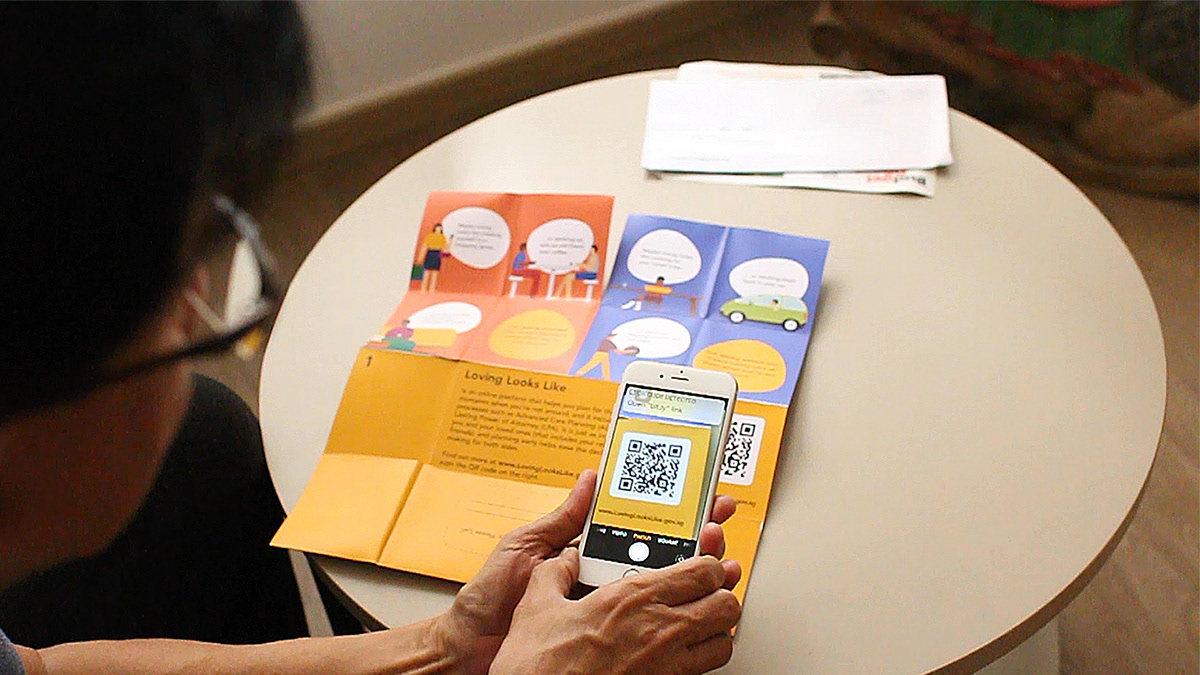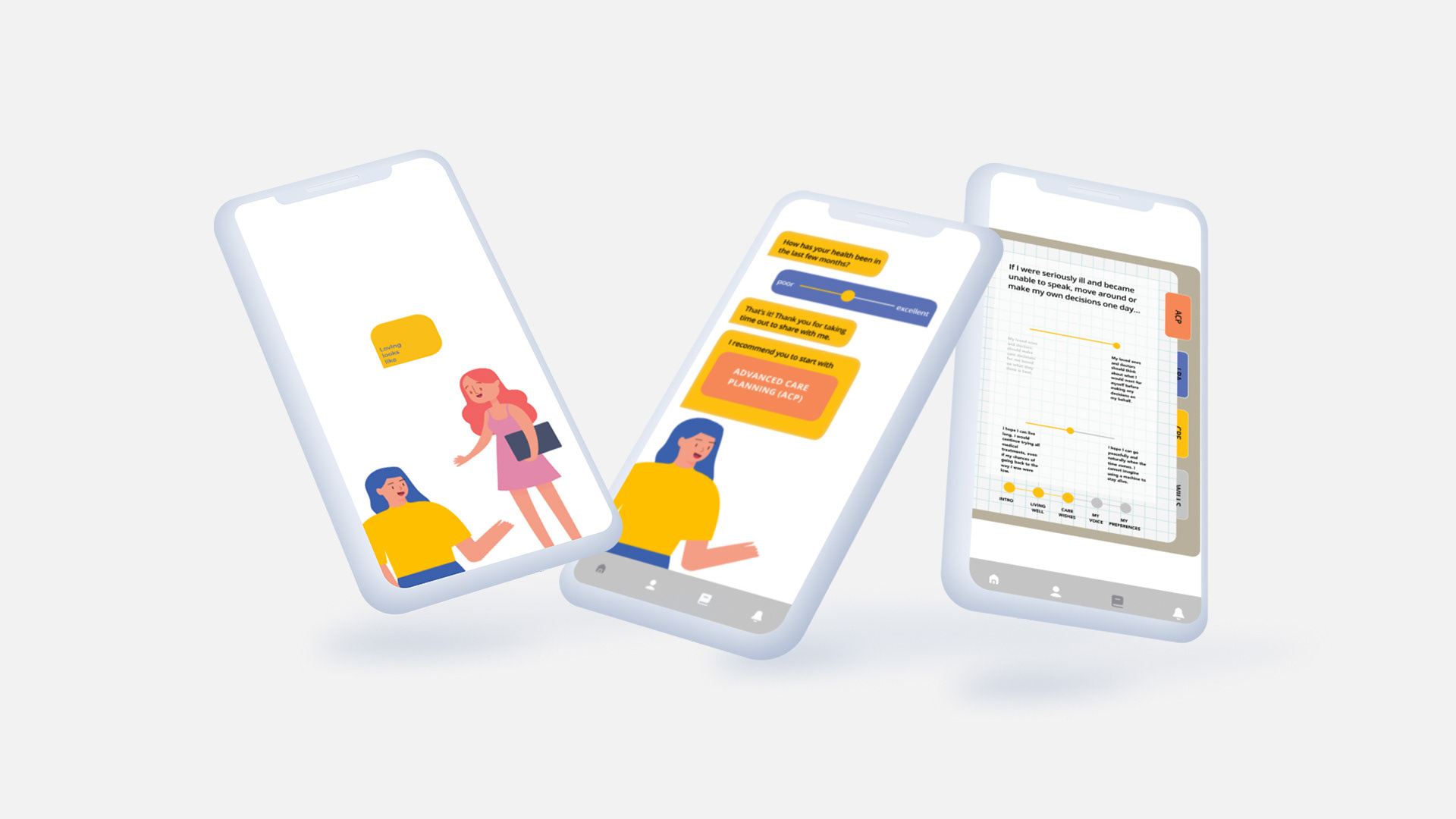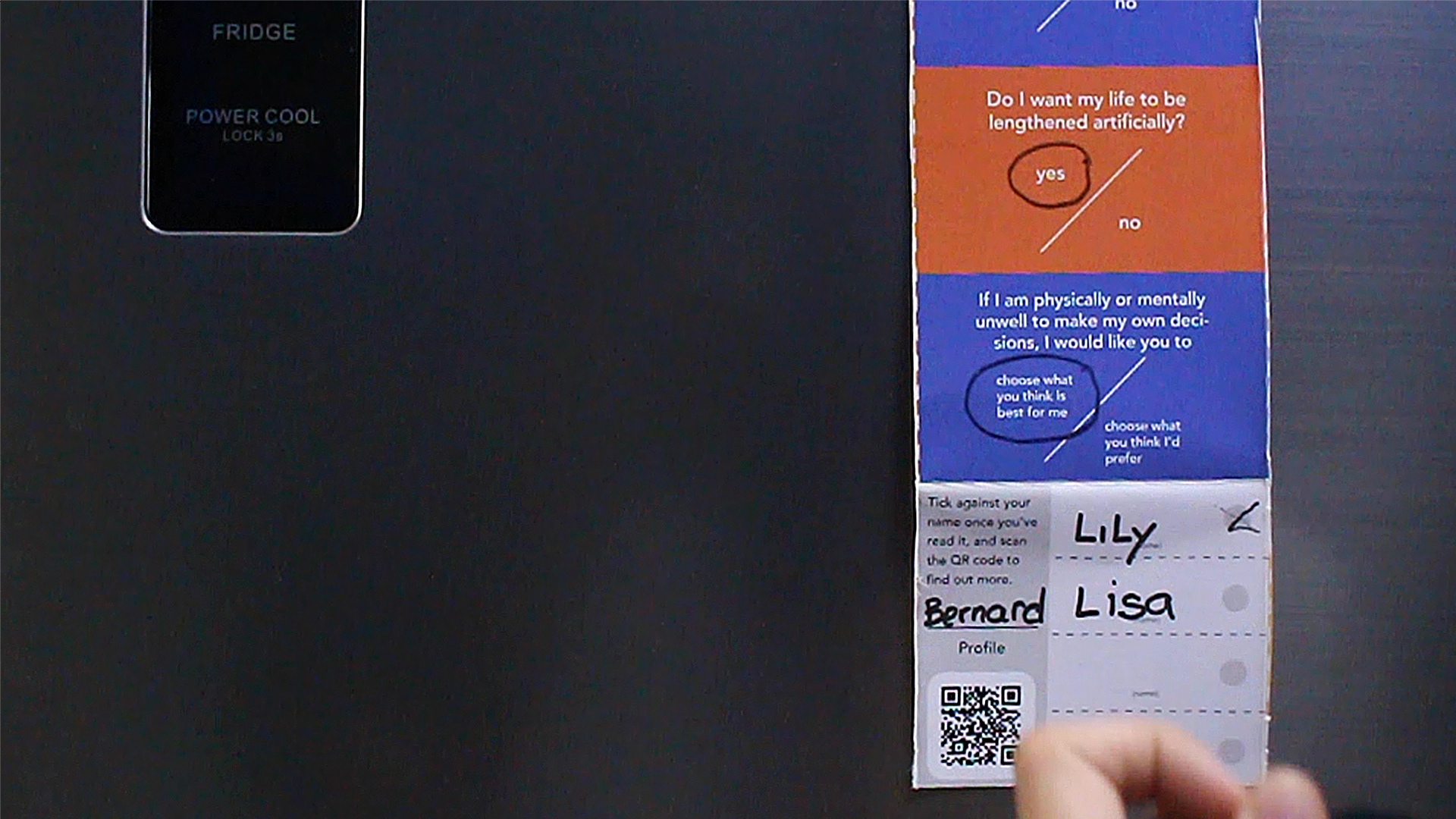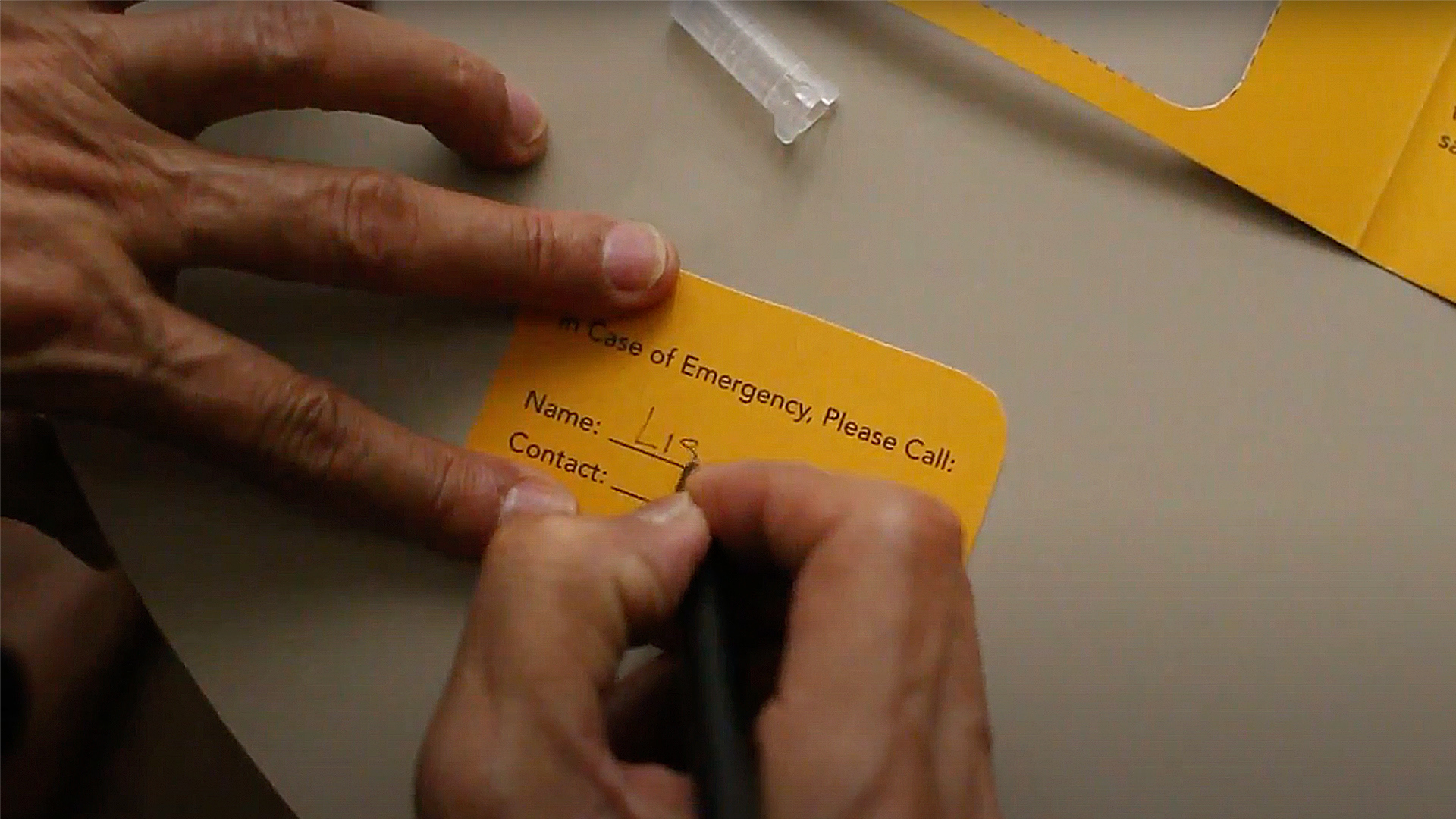01 LOVING LOOKS LIKE
2019
Role
UX Research + UI Design + Product prototyping
In collaboration with
Ashley Huang
Jonjoe Fong
GovTech
UX Research + UI Design + Product prototyping
In collaboration with
Ashley Huang
Jonjoe Fong
GovTech
End-Of-Life planning consists of processes that help reduce the emotional and financial burden on both the person planning and their loved ones. These processes have to be completed early in a person’s life in case of unforeseen circumstances of unconsciousness or cognitive inability.
We were tasked to find a way to generate awareness of End-Of-Life planning amongst our target group of 40-60 year old Singaporeans, and also to help them make plans in a straightforward way.
Research Process
![]()
![]()
We started with extensive user research to better understand our target group through an online survey which garnered 120 responses, and then following up with 9 in-depth interviews with selected surveyees. After which, we created 4 personas to understand the spectrum of people we had to cater to, and decided to focus on the “procrastinators” who were the bulk of our survey respondents: people who had vague impressions of End-Of-Life planning but didn’t act on it.
![]()
![]()
After extensive synthesis of our information we came up with the following insights:
![]()
Our final problem statement: “How might we reframe end-of-life planning positively into an everyday conversation topic to induce responsibility to plan?”
Solution
![]()
Loving Looks Like is a complete system which reframes and refreshes the process of End-Of-Life planning. The solution leverages on personal responsibility to raise awareness for the public, and creates opportunities for the user to discover, consider, and share their decisions.
![]()
![]()
The planning for one’s end of life is rebranded as an everyday act of love, be it for one’s self or loved ones, and it counters the typical taboo-ness of death within society.
![]()
![]()
This is followed by an interactive pamphlet that consists of a simple three-part process for the user to participate in and enables sharing of actionable information.
![]()
![]()
1. A one-stop digital platform which guides users through their decision-making process, while encompassing information on end-of-life planning
![]()
![]()
2. A conversation starter which makes sharing end-of-life decisions with family simple and less awkward
![]()
![]()
3. A detachable Information / Emergency card allows for access during emergencies, as a physical reminder and for sharing with friends.
︎︎︎ Video walkthrough of Loving Looks Like
︎︎︎ Back
We were tasked to find a way to generate awareness of End-Of-Life planning amongst our target group of 40-60 year old Singaporeans, and also to help them make plans in a straightforward way.
Research Process


We started with extensive user research to better understand our target group through an online survey which garnered 120 responses, and then following up with 9 in-depth interviews with selected surveyees. After which, we created 4 personas to understand the spectrum of people we had to cater to, and decided to focus on the “procrastinators” who were the bulk of our survey respondents: people who had vague impressions of End-Of-Life planning but didn’t act on it.


After extensive synthesis of our information we came up with the following insights:

Our final problem statement: “How might we reframe end-of-life planning positively into an everyday conversation topic to induce responsibility to plan?”
Solution

Loving Looks Like is a complete system which reframes and refreshes the process of End-Of-Life planning. The solution leverages on personal responsibility to raise awareness for the public, and creates opportunities for the user to discover, consider, and share their decisions.


The planning for one’s end of life is rebranded as an everyday act of love, be it for one’s self or loved ones, and it counters the typical taboo-ness of death within society.


This is followed by an interactive pamphlet that consists of a simple three-part process for the user to participate in and enables sharing of actionable information.


1. A one-stop digital platform which guides users through their decision-making process, while encompassing information on end-of-life planning


2. A conversation starter which makes sharing end-of-life decisions with family simple and less awkward


3. A detachable Information / Emergency card allows for access during emergencies, as a physical reminder and for sharing with friends.
︎︎︎ Video walkthrough of Loving Looks Like
︎︎︎ Back